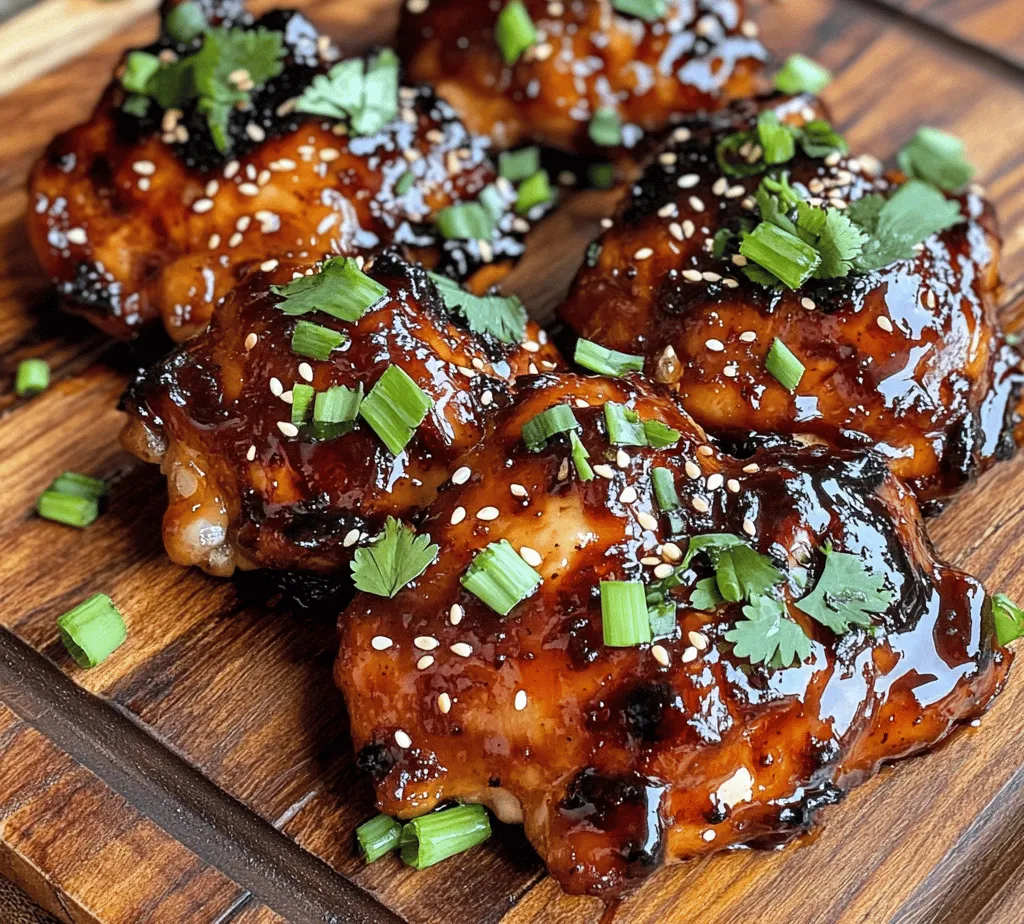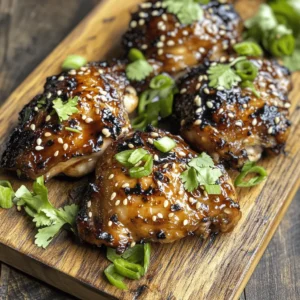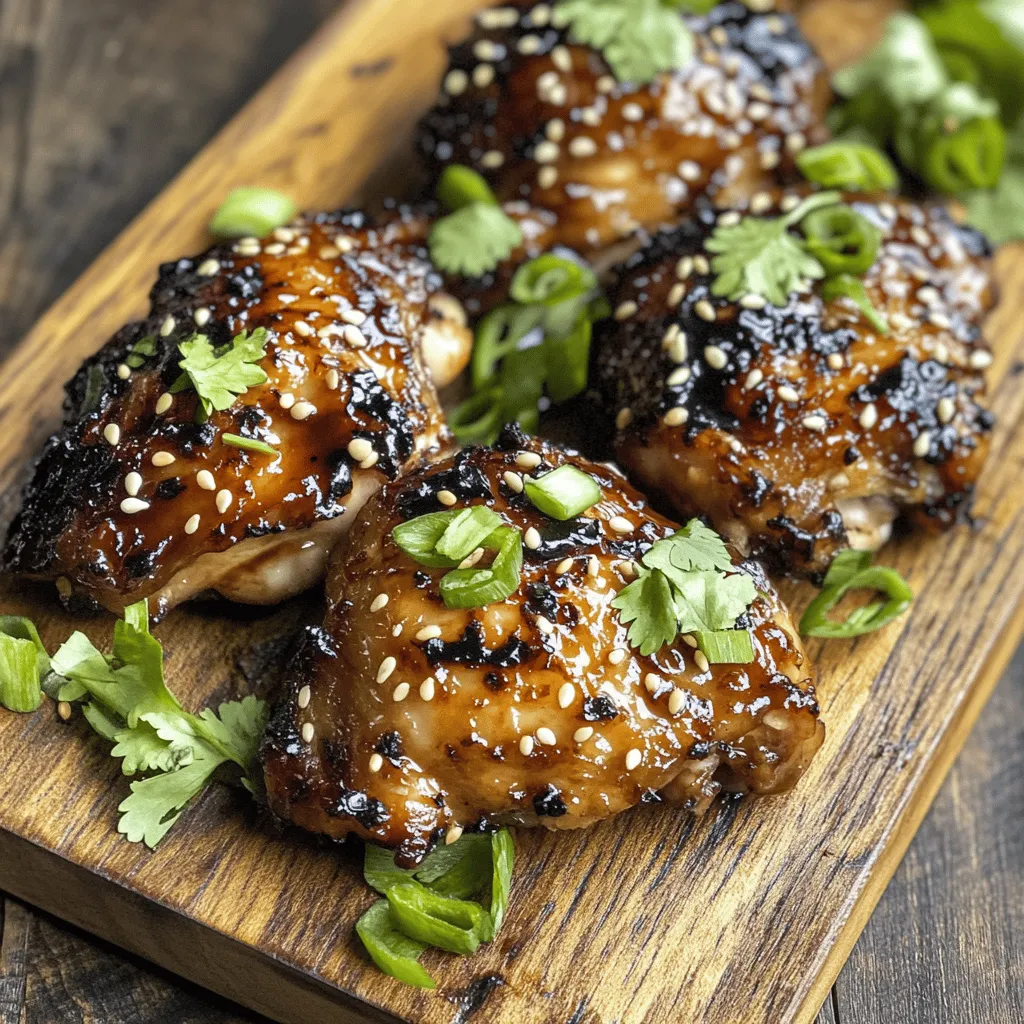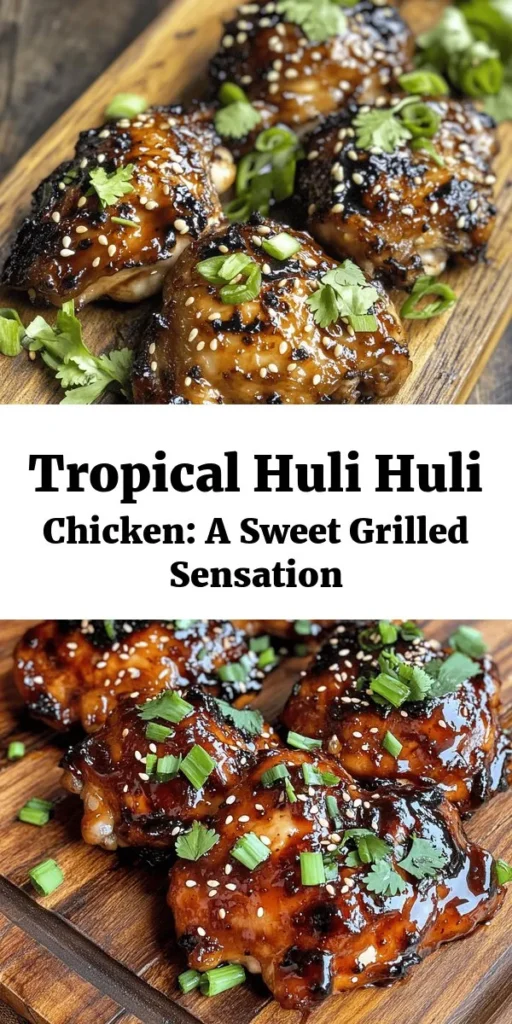Introduction
Huli Huli Chicken is a beloved dish that embodies the vibrant flavors of Hawaiian cuisine, captivating palates far beyond the shores of its origin. This delightful recipe combines the essence of sweet, savory, and a touch of spice, making it a favorite at luaus, family gatherings, and barbecues. With its roots deeply embedded in Hawaiian culture, Huli Huli Chicken is much more than just a meal; it’s a celebration of the islands’ rich culinary heritage.
The term “Huli Huli” translates to “turn turn” in Hawaiian, which refers to the method of cooking the chicken over an open flame, turning it to ensure even cooking and caramelization of the marinade. This technique not only enhances the flavor but also creates a beautiful, charred exterior that locks in the juiciness of the chicken. By using fresh ingredients and traditional cooking methods, you can recreate this authentic Hawaiian dish right in your own kitchen.
Understanding Huli Huli Chicken
To truly appreciate Huli Huli Chicken, it is essential to understand its historical context. This dish emerged in Hawaii in the 1950s, attributed to a local chef who began grilling chicken marinated in a mixture of soy sauce, pineapple juice, and spices for his roadside barbecue stand. The unique flavor profile quickly gained popularity, leading to its status as a staple at Hawaiian luaus and family gatherings.
Huli Huli Chicken represents the perfect blend of cultural influences that characterize Hawaiian cuisine, drawing from Asian, Polynesian, and American culinary traditions. Its popularity has transcended its local origins; today, it is enjoyed by food enthusiasts around the world.
The name “Huli Huli” reflects the cooking method involved in preparing this dish. Traditionally, the chicken is grilled on a rotisserie, allowing the cook to turn the chicken periodically, ensuring that all sides are evenly cooked and coated in the flavorful marinade. This process not only enhances the taste but also creates that signature caramelized finish, making every bite a delightful experience.
Ingredients Breakdown
Comprehensive List of Ingredients
To recreate the authentic flavors of Huli Huli Chicken, you will need the following ingredients:
– Chicken Thighs: Chicken thighs are the preferred choice for this recipe due to their higher fat content, which keeps the meat juicy and flavorful during cooking. While you can use chicken breasts, thighs provide a more tender outcome.
– Soy Sauce: This ingredient serves as the backbone of the marinade, providing a rich umami flavor that enhances the overall taste of the chicken.
– Pineapple Juice: A key player in the marinade, pineapple juice introduces a natural sweetness and acidity, balancing out the savory elements from the soy sauce and other ingredients.
– Brown Sugar and Ketchup: Together, these ingredients contribute to the caramelization of the chicken, adding depth of flavor and a hint of sweetness that complements the savory marinade beautifully.
– Garlic and Ginger: Essential aromatics in this recipe, garlic and ginger impart a punch of flavor that elevates the dish and adds complexity to the overall profile.
– Rice Vinegar: This ingredient adds a touch of acidity, helping to tenderize the chicken and brightening the overall flavor of the marinade.
– Sesame Oil: A drizzle of sesame oil introduces a nutty flavor, enhancing the dish’s richness and tying together the various elements.
– Spices: Freshly cracked black pepper provides warmth, while optional red pepper flakes can add a hint of heat for those who enjoy a spicier kick.
Importance of Each Ingredient in Enhancing Flavor
Every ingredient in the Huli Huli Chicken recipe plays a crucial role in building the dish’s signature flavor profile. The combination of sweet and savory elements creates a harmonious balance that is both satisfying and memorable.
– The chicken thighs ensure that the meat remains juicy and flavorful, which is vital for a dish that relies on grilling for its signature taste.
– Soy sauce not only flavors the chicken but also aids in marination, allowing the meat to absorb the complex flavors effectively.
– The pineapple juice not only adds sweetness but also helps to tenderize the meat due to its natural enzymes, resulting in a succulent final product.
– Brown sugar and ketchup work together to create a caramelized crust on the chicken, giving it an appealing color and enhancing the flavor complexity.
– Garlic and ginger are not just aromatics; they bring depth and brightness to the marinade, making every bite more exciting.
– Rice vinegar balances the dish with acidity, cutting through the sweetness and richness of the other ingredients.
– Sesame oil adds a layer of nuttiness that ties the dish together, enhancing its overall richness.
These ingredients can be easily found in most grocery stores, making it convenient for home cooks to whip up Huli Huli Chicken any time they crave a taste of the islands. Furthermore, for those looking to experiment, there are plenty of ingredient substitutions available to cater to dietary preferences.
Suggestions for Ingredient Substitutions or Variations
– For a lighter option, you can swap out chicken thighs for chicken breasts. However, be mindful that chicken breasts may dry out quicker due to their lower fat content. If you choose this route, consider marinating them for a shorter period.
– For a vegetarian or vegan alternative, firm tofu can be used in place of chicken. Make sure to press the tofu to remove excess moisture and marinate it well to ensure it absorbs the flavors.
– If you prefer a gluten-free version, you can use tamari instead of soy sauce to maintain that umami flavor without gluten.
– Feel free to adjust the sweetness level by modifying the amount of brown sugar and pineapple juice according to your taste.
Marination Process
Marination is a crucial step in preparing Huli Huli Chicken, as it allows the flavors to penetrate the meat, resulting in a more flavorful and tender dish. The process is relatively straightforward but requires attention to detail for optimal results.
Importance of Marination for Flavor Penetration and Tenderness
The marination process not only adds flavor but also helps to tenderize the chicken. The acids in the pineapple juice and rice vinegar break down the proteins in the meat, leading to a more tender texture. This is particularly important for chicken thighs, which benefit from a good soak in a flavorful marinade.
Step-by-Step Guidance on How to Properly Marinate Chicken Thighs
1. Prepare the Marinade: In a mixing bowl, combine soy sauce, pineapple juice, brown sugar, ketchup, minced garlic, grated ginger, rice vinegar, and sesame oil. Whisk until the sugar is fully dissolved and all ingredients are well incorporated.
2. Add Spices: Stir in freshly cracked black pepper and optional red pepper flakes if you desire a little heat in your dish.
3. Marinate the Chicken: Place the chicken thighs in a resealable plastic bag or a shallow dish. Pour the marinade over the chicken, ensuring that each piece is well-coated. Seal the bag or cover the dish with plastic wrap.
4. Refrigerate: Allow the chicken to marinate in the refrigerator for at least 1 hour. For optimal flavor absorption, marinate for 4-6 hours, or even overnight if time allows. The longer the chicken marinates, the more intense the flavors will become.
5. Remove and Prepare for Cooking: Once marinated, remove the chicken from the marinade, allowing excess liquid to drip off. Discard the marinade to prevent contamination from raw chicken.
6. Ready to Grill: Your chicken is now ready to be grilled. Preheat your grill to medium-high heat, and you’re set to create a delicious Huli Huli Chicken Delight that will transport your taste buds straight to Hawaii.
With these foundational steps, you are well on your way to creating Huli Huli Chicken that is bursting with flavor and authenticity. The next stages of cooking will further enhance this dish, ensuring it becomes a highlight at any gathering or family meal.

Safety Tips for Handling Raw Chicken and Marinating Practices
When preparing Huli Huli Chicken, it’s imperative to prioritize kitchen safety, especially when handling raw chicken. Cross-contamination can lead to foodborne illnesses, so follow these essential safety tips:
1. Cleanliness is Key: Always wash your hands with soap and water before and after handling raw chicken. Ensure that all surfaces, utensils, and cutting boards are thoroughly cleaned and sanitized after coming into contact with raw poultry.
2. Separate and Store: Store raw chicken separately from other foods in the refrigerator. Use a designated cutting board for raw chicken to avoid contamination with other ingredients.
3. Marinating Safely: When marinating chicken, always do so in the refrigerator. Never leave marinating chicken at room temperature, as this can promote bacterial growth. If you have leftover marinade, avoid using it as a sauce unless it has been boiled to eliminate any bacteria.
4. Use a Meat Thermometer: To ensure your chicken is fully cooked and safe to eat, use a meat thermometer. The internal temperature of the chicken should reach at least 165°F (75°C).
Following these practices will help ensure that your Huli Huli Chicken is not only delicious but also safe to enjoy.
Preparing Your Grill
Achieving the perfect Huli Huli Chicken requires adequate grill preparation. A well-prepared grill not only enhances the flavor of your chicken but also prevents sticking and ensures even cooking.
1. Preheat Your Grill: Whether you’re using a gas or charcoal grill, preheating is essential. For gas grills, turn on the burners to medium-high and let the grill heat for about 10-15 minutes. For charcoal grills, light the charcoal and allow it to burn until it’s covered in white ash, which usually takes about 20-30 minutes.
2. Oil the Grill Grates: Once your grill is preheated, it’s important to oil the grates. This prevents the chicken from sticking and helps achieve those coveted grill marks. Use a paper towel soaked in vegetable oil, and with tongs, carefully wipe the grates to coat them evenly.
3. Choosing Your Grill Method: Gas grills offer convenience and consistent heat, making them ideal for beginners. On the other hand, charcoal grills provide a smoky flavor that many barbecue enthusiasts prefer. Each method has its merits, so choose based on your flavor preference and experience level.
Grilling the Chicken
Grilling your marinated Huli Huli Chicken is the heart of this recipe. Follow these step-by-step instructions to achieve perfectly grilled chicken.
1. Prepare the Chicken: After marinating the chicken for at least 2 hours (or overnight for more flavor), remove it from the marinade and allow any excess marinade to drip off. This step is crucial for preventing flare-ups on the grill.
2. Place the Chicken on the Grill: Lay the chicken pieces on the grill grates, ensuring there’s enough space between each piece to allow for even cooking. Close the lid and grill for about 5-7 minutes.
3. Check for Doneness: After the initial grilling time, use a meat thermometer to check the internal temperature of the chicken. It should read at least 165°F. If you don’t have a thermometer, look for visual cues: the chicken should be golden brown with juices running clear.
4. Basting for Flavor: During the last few minutes of grilling, consider basting the chicken with reserved marinade (that has been boiled to eliminate bacteria) or a simple mixture of honey and soy sauce. Basting adds moisture and enhances flavor, creating a delicious glaze on the chicken.
5. Visual Cues for Perfect Grilling: Perfectly grilled chicken will have a caramelized exterior with a slight char, indicating that the sugars in the marinade have caramelized. The meat should also feel firm to the touch but spring back slightly when pressed.
Serving Suggestions
Plating your Huli Huli Chicken beautifully not only enhances its appeal but also elevates the dining experience. Here are some ideas for serving:
1. Plating and Garnishing: Arrange the grilled chicken on a large platter or individual plates. For added visual appeal, garnish with fresh green onions, cilantro, and a sprinkle of sesame seeds. The vibrant colors will make your dish pop and entice your guests.
2. Side Dish Pairings: To complement the flavors of Huli Huli Chicken, consider serving:
– Coconut Rice: The creaminess of coconut rice pairs beautifully with the savory and slightly sweet chicken, balancing the flavors perfectly.
– Grilled Vegetables: Seasonal vegetables such as bell peppers, zucchini, and asparagus can be tossed with olive oil and grilled alongside the chicken for a healthy side.
– Tropical Fruit Salad: A refreshing tropical fruit salad with pineapple, mango, and watermelon can provide a delightful contrast to the savory chicken, enhancing the Hawaiian theme.
3. Importance of Garnishing: Don’t underestimate the power of garnishing. Fresh green onions not only add a pop of color but also a fresh crunch, while cilantro introduces an aromatic element. Sesame seeds provide a nutty flavor and an appealing texture contrast.
Nutritional Information
Huli Huli Chicken is not only a treat for the taste buds but also offers several nutritional benefits:
1. Overview of Nutritional Benefits: The main ingredients in Huli Huli Chicken, such as chicken breast, pineapple juice, and soy sauce, contribute to a balanced meal. Chicken breast is a lean protein source, essential for muscle building and repair. Pineapple juice adds natural sweetness and contains bromelain, which aids digestion.
2. Portion Sizes: A standard serving size of Huli Huli Chicken is about 4-6 ounces. This portion, when paired with healthy side dishes, can fit well within a balanced diet.
3. Dietary Considerations: For those with dietary restrictions, Huli Huli Chicken can be easily adjusted. Use gluten-free soy sauce to accommodate gluten sensitivities. Additionally, the recipe can be adapted by substituting chicken with tofu or tempeh for a vegetarian version.
Conclusion
Huli Huli Chicken is more than just a meal; it’s an invitation to explore the vibrant flavors of Hawaiian cuisine. With its perfect balance of sweet and savory, this dish is sure to delight your family and friends at any gathering.
Encouraging you to step outside your culinary comfort zone, making Huli Huli Chicken can be a joyful experience, whether you’re grilling for a summer barbecue or preparing a comforting meal at home. The process of cooking and sharing delicious food fosters connections and creates lasting memories. So, gather your ingredients, fire up the grill, and savor the joy of creating and enjoying this delightful dish with loved ones.



